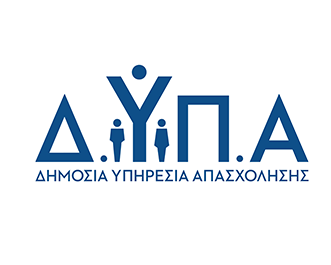The pilot programme for the new unemployment benefit was launched
The pilot programme for the new unemployment benefit was launched
The implementation of the pilot programme for the unemployment benefit began today, Friday, March 28, according to the JMD no. 54427/20.12.2024 (Official Government Gazette Β' 7047/20.12.2024). Aim of the pilot programme is to draw from the experience gained by the pilot programme and to create a new unemployment benefit that meets the needs of the labour market today, a benefit that is simpler, fairer, more effective and focused on the contributions paid.
More specifically, the preselection of the potential beneficiaries of the new unemployment benefit begins today. A specially designed algorithm automatically calculates the amount of the benefit under both the existing legislative framework and the new one. The algorithm will preselect beneficiaries that meet a key condition: the total amount the beneficiary will receive in the framework of the pilot programme is equal to or higher than the amount the beneficiary would be entitled to under the current scheme.
The pilot action is implemented following a joint study of the Greek Public Employment Service and OECD in the framework of the Technical Support Instrument (TSI), Directorate-General for Structural Reform Support of the European Commission (DG-REFORM), and is funded by the Recovery and Resilience Facility with a total budget of 100 m. Euros.
The new unemployment benefit aims to:
- Offer greater support and motivation to find work: It will provide beneficiaries with a higher amount during the first six months, compared to the current scheme, because it is frontloaded – the benefit amount will be higher in the beginning and will gradually decrease – thus providing a stronger motive to return to work soon.
- Provide reciprocation and justice: The height of the benefit is calculated based on the contributions paid by the unemployed persons, as is the case in 25 out of the 27 EU countries, and cases with great differences will not be treated the same way, as it happens in Greece now. Today, regardless of whether a person has worked for 2 years with the minimum wage or 20 years with a salary of €2.000, (s)he receives the same benefit in terms of height and entitlement period.
- Offer effectiveness and simplification: Merging the Benefit for the Long Term Unemployed with the new unemployment benefit and automating complicated procedures will ensure the simplification and enhance the benefit's effectiveness.
The new benefit consists of three components:
- Fixed component: It is calculated based on the beneficiary’s earnings in relation to the legal minimum daily wage. It starts in the 1st quarter from 70% of the minimum daily wage (or the average daily wage of the beneficiary’s earnings, in case they are lower than the minimum wage) and it decreases gradually as follows (60% in the 2nd quarter, 50% in the 3rd quarter, in the 40% 4th quarter, 30% in the 1st semester of the 2nd year, 20% in the 2nd semester of the 2nd year). At the same time the average benefit rate in the first 12-month period remains at the 55% of the legal minimum daily wage, as it stands today.
- Variable component ("bonus"): It depends a) on the number of insurance years (starting from the 4th till the 20th insurance year) and b) on the beneficiary’s average earnings. This way the working life is linked to the height of the variable component thus increasing the total benefit for those who have worked for at least 4 years and enhancing the contributory nature of the insurance against the risk of unemployment. It should be stressed that the unemployment benefit is contributory benefit (it is based on the contributions paid) and not welfare allowance.
- Supplements: Christmas and Easter bonuses, child supplement and – for the first time – single-parent supplement.
Fequently asked questions on DYPA’s pilot unemployment benefit:
- Why does the unemployment benefit need to change? The legal framework for the current unemployment benefit was shaped in the 1950s. It is therefore necessary to update it so it can be linked to the needs of today's labour market and to respond to current key issues, such as the effective and fair support of the unemployed persons and their motivation to reintegrate into the labour market.
- Which needs does the new pilot unemployment benefit aim to cover; The new pilot unemployment benefit aims at: a) The modernisation of the benefit so it can respond to current socio-economic conditions and to enhance its effectiveness , b) the support of the beneficiaries, combating unemployment, especially during the first, difficult period, and the beneficiaries' faster/ quickest reintegration into the labour market and c) the reinforcement of the system's contributory character determining the benefit amount according to the work years and earnings/ by providing to the beneficiaries benefits according to their work years and their earnings, i.e. their personal contribution to the social security/ insurance scheme.
- What are the key changes in the new pilot unemployment benefit that fulfil the above objectives? The changes are focused on three pillars: a) the conditions, b) the duration and c) the height of the amount. More specifically:
- It merges the regular unemployment benefit with the Benefit for the Long Term Unemployed which in turn allows for a maximum benefit duration of up to 2 years (24 months) and follows a tailor-made approach regarding the amount of the benefit.
- It sets a more rational basis for both the entitlement of the benefit (setting the 175 days of insurance as a limit) and the duration of the benefit (now it is calculated based on a ratio of 2 months of work: 1 month of benefit for the first year of the benefit and 3 months of work: 1 month of benefit for the second year)
- It takes into account the insurance history for the calculation of the benefit height. It provides a fixed component for all beneficiaries and an extra variable component depending on the insurance history of each beneficiary.
- In addition to the Christmas and Easter bonuses and the child supplement for the first time the scheme takes into consideration the single parent status. These beneficiaries are granted an additional amount.
- The scheme is front-loaded, meaning that the amount benefit is higher during the first few months and gradually reduces to promote reintegration into the labour market, as is the case in 17 EU member states.
- How are beneficiaries of the new pilot unemployment benefit selected? The selection of the unemployed will be conducted randomly, according to the methodology of the Randomized Controlled Trial (RCT). The algorithm will select from all applications for unemployment benefit provided that the new eligibility criteria are met and the total amount of the benefit under the new criteria is higher than the one granted under the current scheme. The new pilot unemployment benefit concerns those who have not received unemployment benefit during the last 4 years prior to the termination of their employment.
- How can a person apply for the new unemployment benefit during the pilot period; NO special application is needed since the same application form for the current unemployment benefit is used, which is available on DYPA e-services. Supporting documents remain the same and are requested ex officio. Only one extra supporting document is requested regarding the status of the single parent. The applicant will have to attach this document to the application because in this case the ex officio request is not available.
- Beneficiaries of the pilot benefit will receive a lower benefit amount? No beneficiary participating in the pilot unemployment benefit will receive a lower amount compared to the amount (s)he would have received under the current scheme (as is clearly stated in the relevant law).
- Are those already receiving unemployment benefit affected? No. Those who receive unemployment benefit under the current legal framework continue to do so for the duration of the entitlement without being affected.
- Does the pilot unemployment benefit affect the Special seasonal allowance? No. The pilot programme concerns only the regular unemployment benefit and is not related to the Special seasonal allowance.
- When is the new unemployment benefit scheme expected to be fully implemented? During the pilot period the new unemployment benefit scheme will be evaluated and, based on the evaluation findings, will be amended accordingly and applied to all applicants.
- How many beneficiaries will participate in the pilot unemployment programme? Approximately 15.000 beneficiaries will be selected to participate.






















